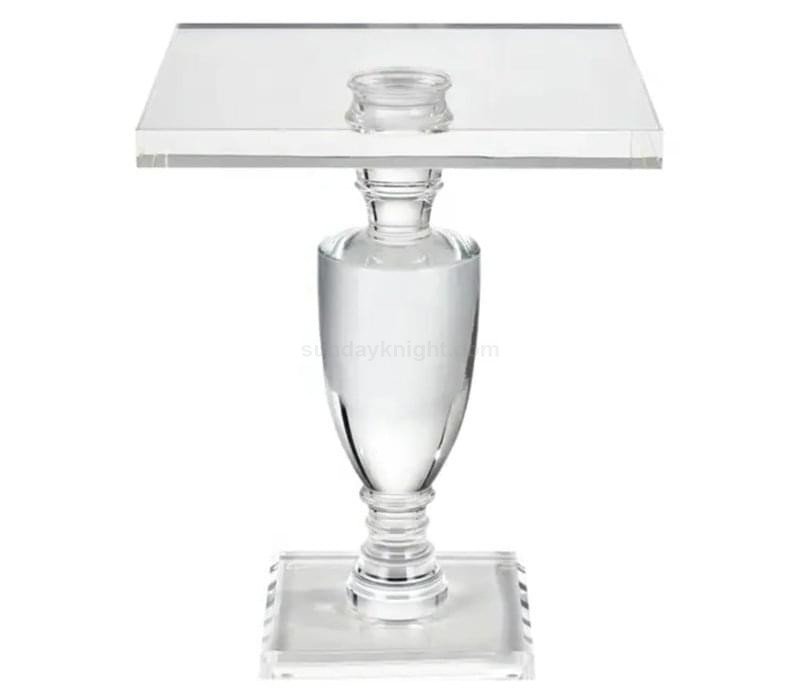Acrylic products have become a staple in homes, offices, and businesses due to their versatility, durability, and sleek appearance. From display cases to furniture, signage to protective barriers, acrylic offers a lightweight, shatter-resistant alternative to glass with a modern aesthetic. However, like any material, acrylic requires proper care to maintain its clarity and extend its lifespan. In this guide, we’ll walk you through the best practices for cleaning and maintaining acrylic products to keep them looking pristine for years to come.



Why Proper Care Matters for Acrylic
Acrylic, often known by brand names like Plexiglas or Lucite, is a type of plastic (polymethyl methacrylate, or PMMA) prized for its transparency and strength. While it’s more durable than glass in many ways, acrylic is prone to scratching and can develop a hazy or cloudy appearance if not cleaned correctly. Improper cleaning methods, such as using harsh chemicals or abrasive materials, can damage the surface, leading to costly replacements or repairs. By following a few simple steps, you can preserve the beauty and functionality of your acrylic items.
Cleaning Acrylic: The Right Approach
Cleaning acrylic is straightforward, but it requires care to avoid scratches or chemical damage. Here’s a step-by-step guide to cleaning your acrylic products safely and effectively:
1. Gather the Right Supplies
Before you start, make sure you have the proper tools. You’ll need:
- A soft microfiber cloth or non-abrasive sponge
- Mild dish soap or a specialized acrylic cleaner
- Lukewarm water
- A clean, lint-free cloth for drying
- Optional: A plastic polish for minor scratches
Avoid using paper towels, rough cloths, or scouring pads, as these can scratch the surface. Also, steer clear of harsh chemicals like ammonia, acetone, or alcohol-based cleaners (e.g., Windex), as they can cause crazing—tiny cracks that cloud the material.
2. Remove Dust and Debris
Start by gently removing loose dust or debris from the acrylic surface. Use a microfiber cloth to lightly wipe the surface or blow away particles with a can of compressed air. For larger items like furniture or display cases, you can rinse the surface with lukewarm water to dislodge dirt. Avoid excessive pressure to prevent micro-abrasions.
3. Prepare a Cleaning Solution
Mix a small amount of mild dish soap with lukewarm water in a spray bottle or bowl. A ratio of one teaspoon of soap to a quart of water works well. If you prefer, you can purchase a commercial acrylic cleaner, such as Novus #1 or Brillianize, which are formulated specifically for plastic surfaces. These products are gentle and often include anti-static properties to repel dust.
4. Clean the Surface
Dampen your microfiber cloth or sponge with the cleaning solution—don’t soak it, as excess water can seep into edges or seams and cause damage over time. Gently wipe the acrylic in a circular or back-and-forth motion, applying minimal pressure. For stubborn stains, let the solution sit for a minute before wiping. Never scrub aggressively, as this can create scratches.
5. Rinse and Dry
Rinse the acrylic with clean, lukewarm water to remove any soap residue. For small items, you can hold them under running water; for larger pieces, use a clean, damp cloth to wipe away the soap. Dry the surface immediately with a clean, lint-free microfiber cloth to prevent water spots. Buff gently to restore the shine.
6. Address Scratches (Optional)
If your acrylic has minor scratches, you can use a plastic polish like Novus #2 or a similar product. Apply a small amount to a microfiber cloth and rub the scratched area in a circular motion until the scratch diminishes. For deeper scratches, consult a professional, as attempting to buff them out yourself may worsen the damage.
Maintenance Tips to Extend Acrylic’s Lifespan
Beyond regular cleaning, proper maintenance habits can significantly prolong the life of your acrylic products. Here are some practical tips to keep in mind:
1. Avoid Harsh Environments
Acrylic is sensitive to extreme temperatures and prolonged exposure to sunlight. Over time, UV rays can cause yellowing or fading, especially in outdoor applications like signage. If your acrylic product is used outdoors, consider applying a UV-resistant coating or choosing UV-stabilized acrylic when purchasing. For indoor items, avoid placing them near heat sources like radiators or fireplaces, as high temperatures can warp the material.
2. Store Properly
When storing acrylic sheets, panels, or products, keep them in a cool, dry place away from direct sunlight. Lay them flat or stand them upright with support to prevent bending or warping. Cover them with a soft cloth or protective film to shield against dust and scratches. Never stack heavy objects on top, as this can cause deformation.
3. Handle with Care
When moving or installing acrylic products, handle them gently to avoid scratches or cracks. Use two people for large panels to distribute the weight evenly. If you’re mounting or cutting acrylic, follow manufacturer guidelines and use tools designed for plastics to prevent chipping or cracking.
4. Regular Dusting
Dust can act like an abrasive if left on the surface, so regular dusting is key. Use a microfiber cloth or a soft duster to gently remove dust at least once a week. For hard-to-reach areas, a can of compressed air can help without risking scratches.
5. Avoid Contact with Harmful Substances
Acrylic is chemically sensitive, so keep it away from solvents, gasoline, or other harsh chemicals. Even prolonged exposure to cleaning agents like bleach can cause damage. If your acrylic product is in a high-traffic area, such as a retail counter or protective barrier, consider placing a sign to remind users to avoid leaning objects against it or using improper cleaners.
Common Mistakes to Avoid
To keep your acrylic looking its best, avoid these common pitfalls:
- Using glass cleaners: Products like Windex often contain ammonia or alcohol, which can damage acrylic.
- Using abrasive materials: Paper towels, scrub brushes, or rough sponges can leave visible scratches.
- Skipping the rinse step: Soap residue can attract dust and create a hazy appearance.
- Ignoring scratches: Small scratches can worsen over time if not addressed properly.
When to Seek Professional Help
While most acrylic maintenance can be done at home, some situations call for professional expertise. If your acrylic product has deep scratches, cracks, or significant clouding, contact a professional restoration service. For custom installations or repairs, a specialist can ensure the material is handled correctly without compromising its integrity.
Conclusion
Acrylic products are a fantastic investment for their durability, clarity, and versatility, but they require thoughtful care to stay in top condition. By using the right cleaning techniques, avoiding harmful substances, and following basic maintenance practices, you can keep your acrylic items looking brand-new for years. Whether it’s a display case, a piece of furniture, or a protective shield, a little effort goes a long way in preserving the beauty and longevity of your acrylic products. Take the time to care for them properly, and they’ll continue to shine in your space.
